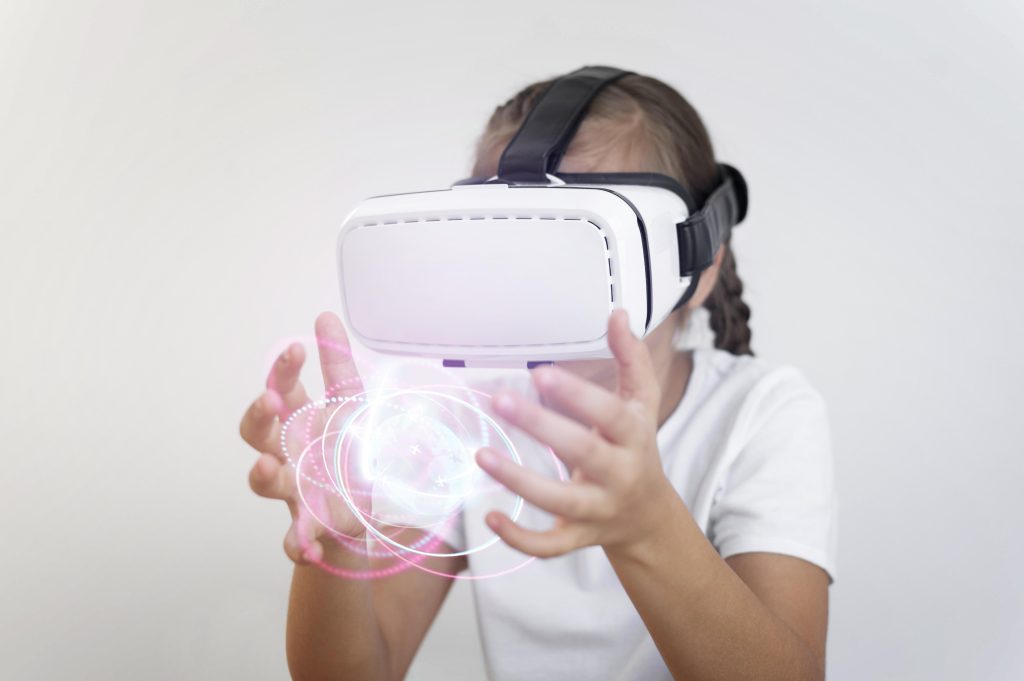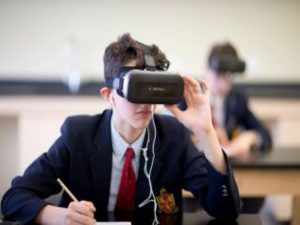In Harnessing Emerging Technologies in Education
In 2020, India took a significant leap forward in its education sector with the introduction of the National Education Policy (NEP). This policy overhaul aimed to bring about transformative changes in the education landscape, aligning it with the needs of the 21st century.
The National Education Policy 2020 (NEP 2020) in India aims to transform the education system to make it more holistic, multidisciplinary, and flexible. One of the key focuses of NEP 2020 is on leveraging emerging technologies like Virtual Reality (VR) to enhance the teaching and learning experience.
VR technology can create immersive and engaging learning experiences that can significantly enhance the retention of information and increase student engagement. It can also provide students with practical, hands-on learning experiences that may not be possible in traditional classroom settings.

By incorporating VR technology in education, NEP 2020 can help bridge the gap between theoretical knowledge and practical application, making learning more experiential and impactful. This can also help in addressing the challenges posed by the COVID-19 pandemic, by providing students with opportunities for virtual learning and collaborative experiences.
Additionally, integrating VR technology into education can also cater to different learning styles and abilities, making education more accessible and inclusive for all students. It can provide a platform for personalized learning experiences, allowing students to progress at their own pace and explore topics in a more interactive and engaging manner.
Furthermore, the use of VR in education can help educators create virtual laboratories, simulations, and field trips, offering students a hands-on learning experience without the need for physical resources or travel. This can make learning more cost-effective and environmentally friendly while expanding opportunities for students to explore new concepts and disciplines.
Conclusion
The significance of incorporating VR technology in education under NEP 2020 lies in its potential to revolutionize the way students learn and teachers teach. By embracing emerging technologies like VR, the education system can evolve to meet the demands of the 21st century and prepare students for a future driven by innovation and technological advancements.

BENEFITS OF TECHNOLOGY IN EDUCATION
Teachers want to improve student performance, and technology can help them accomplish this aim. To mitigate the challenges, administrators should help teachers gain the competencies needed to enhance learning for students through technology. Additionally, technology in the classroom should make teachers’ jobs easier without adding extra time to their day.
Technology provides students with easy-to-access information, accelerated learning, and fun opportunities to practice what they learn. It enables students to explore new subjects and deepen their understanding of difficult concepts, particularly in STEM. Through the use of technology inside and outside the classroom, students can gain 21st-century technical skills necessary for future occupations. Still, children learn more effectively with direction. The World Economic Forum reports that while technology can help young students learn and acquire knowledge through play, for example, evidence suggests that learning is more effective through guidance from an adult, such as a teacher.
Leaders and administrators should take stock of where their faculty are in terms of their understanding of online spaces. From lessons learned during this disruptive time, they can implement solutions now for the future. For example, administrators could give teachers a week or two to think carefully about how to teach courses not previously online. In addition to an exploration of solutions, flexibility during these trying times is of paramount importance.


Below are examples of how important technology is in education and the benefits it offers to students and teachers.
- Increased Collaboration and Communication
Educational technology can foster collaboration. Not only can teachers engage with students during lessons, but students can also communicate with each other. Through online lessons and learning games, students get to work together to solve problems. In collaborative activities, students can share their thoughts and ideas and support each other. At the same time, technology enables one-on-one interaction with teachers. Students can ask classroom-related questions and seek additional help on difficult-to-understand subject matter. At home, students can upload their homework, and teachers can access and view completed assignments using their laptops.

- Personalized Learning Opportunities
Technology allows 24/7 access to educational resources. Classes can take place entirely online via the use of a laptop or mobile device. Hybrid versions of learning combine the use of technology from anywhere with regular in-person classroom sessions. In both scenarios, the use of technology to tailor learning plans for each student is possible. Teachers can create lessons based on student interests and strengths. An added benefit is that students can learn at their own pace. When they need to review class material to get a better understanding of essential concepts, students can review videos in the lesson plan. The data generated through these online activities enable teachers to see which students struggled with certain subjects and offer additional assistance and support.


- Curiosity Driven by Engaging Content
Through engaging and educational content, teachers can spark inquisitiveness in children and boost their curiosity, which research says has ties to academic success. Curiosity helps students get a better understanding of math and reading concepts. Creating engaging content can involve the use of AR, videos, or podcasts. For example, when submitting assignments, students can include videos or interact with students from across the globe.


- Improved Teacher Productivity and Efficiency
Teachers can leverage technology to achieve new levels of productivity, implement useful digital tools to expand learning opportunities for students, and increase student support and engagement. It also enables teachers to improve their instruction methods and personalize learning. Schools can benefit from technology by reducing the costs of physical instructional materials, enhancing educational program efficiency, and making the best use of teacher time.